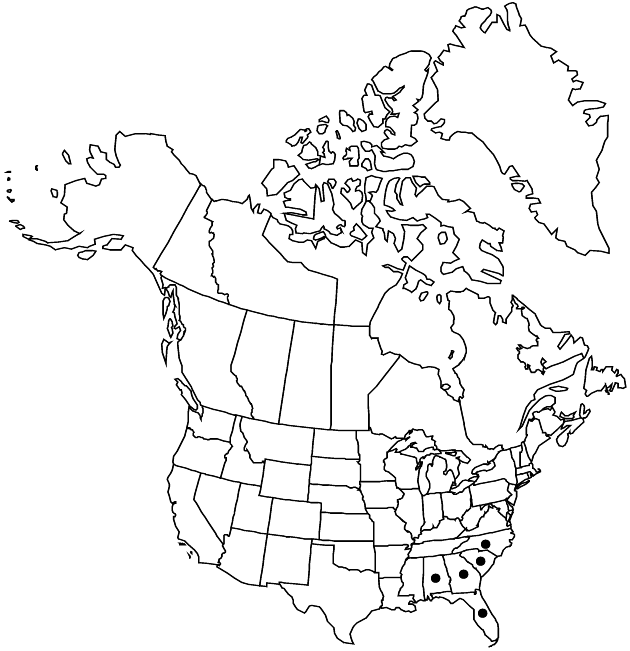Difference between revisions of "Solidago leavenworthii"
Fl. N. Amer. 2: 223. 1842.
FNA>Volume Importer |
FNA>Volume Importer |
Revision as of 18:42, 24 September 2019
Plants (50–)100–200 cm (solitary or clustered); rhizomes creeping, elongate. Stems 1–10+, erect, scabroso-puberulent proximal to arrays distally, in strips proximal to leaves. Leaves: basal 0; mid and distal cauline sometimes numerous (75+), somewhat crowded, sessile, blades (dark green) linear-lanceolate to lanceolate, 25–150 × 2–15 mm, margins serrate to entire, scabroso-ciliate, 3-nerved, faces glabrous or with short hairs in lines along nerves. Heads 50–350, in secund, usually elongate, pyramidal paniculiform arrays, branches recurved and secund. Peduncles 1–5 mm, sparsely to moderately strigillose; bracteoles 1–3, linear-lanceolate. Involucres narrowly campanulate, 3–5 mm. Phyllaries in 3–4 series, strongly unequal (greenish), outer lanceolate, inner oblong-lanceolate, margins ciliate-fimbriate apically, midnerves swollen apically, apices obtuse to rounded, glabrous. Ray florets 10–15; laminae 2–3 × 0.1–0.6 mm. Disc florets 6–10; corollas 3–4 mm, lobes 0.6–1.1 mm. Cypselae (narrowly obconic) 1.1–1.5 mm (ribbed), sparsely strigillose; pappi 2.5–3 mm. 2n = 18, 36, 54.
Phenology: Flowering Nov–Dec.
Habitat: Wet soils, thickets, edges of bogs, coastal plain
Elevation: 10–40 m
Distribution

Ala., Fla., Ga., N.C., S.C.
Discussion
Solidago leavenworthii replaces S. gigantea on the southern, outer Atlantic coastal plain and into Florida. The leaves of S. leavenworthii usually have fewer, smaller serrations than those of S. gigantea, and they have a distinctive dark, somewhat olive green color. The pyramidal array of S. leavenworthii is usually much narrower and elongate while that of S. gigantea is usually broad and not elongate.
Selected References
None.